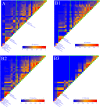ABCG2 contributes to the development of gout and hyperuricemia in a genome-wide association study
- PMID: 29453348
- PMCID: PMC5816657
- DOI: 10.1038/s41598-018-21425-7
ABCG2 contributes to the development of gout and hyperuricemia in a genome-wide association study
Abstract
Although many genome-wide association studies (GWASs) of hyperuricemia or gout have been reported, the related genetic factors and the mechanisms from hyperuricemia to gouty attack remain unclear. This study aimed to identify genetic factors and pathogenesis of gout from hyperuricemia by genome-wide association study (GWAS). 747 gout patients, 747 hyperuricemia and 2071 age-matched controls were recruited and analyzed with Affymetrix 650 K chip to find the related genetic variants. The functions of the related genes were investigated in an endothelial cell (EC) with urate crystal stimulation. The GWAS results showed 36 SNPs to be strongly associated with gout compared to controls (all p-values < 10-7). Whereas the rs2231142 in ABCG2 gene had significant associations between gout and controls, between gout and hyperuricemia, and between hyperuricemia and controls (all p-values < 10-7), and the ORs were 4.34, 3.37 and 2.15 (all p-values < 0.001) after adjustment of potential confounders, respectively. The cell model showed significantly higher IL-8 release from EC combined with ABCG2 knockdown. We concluded that ABCG2 gene contributed to hyperuricemia but also gout, and that it was involved in the inflammation dysregulation via augmented IL-8 release in EC.
Conflict of interest statement
The authors declare no competing interests.
Figures



References
Publication types
MeSH terms
Substances
LinkOut - more resources
Full Text Sources
Other Literature Sources
Medical

